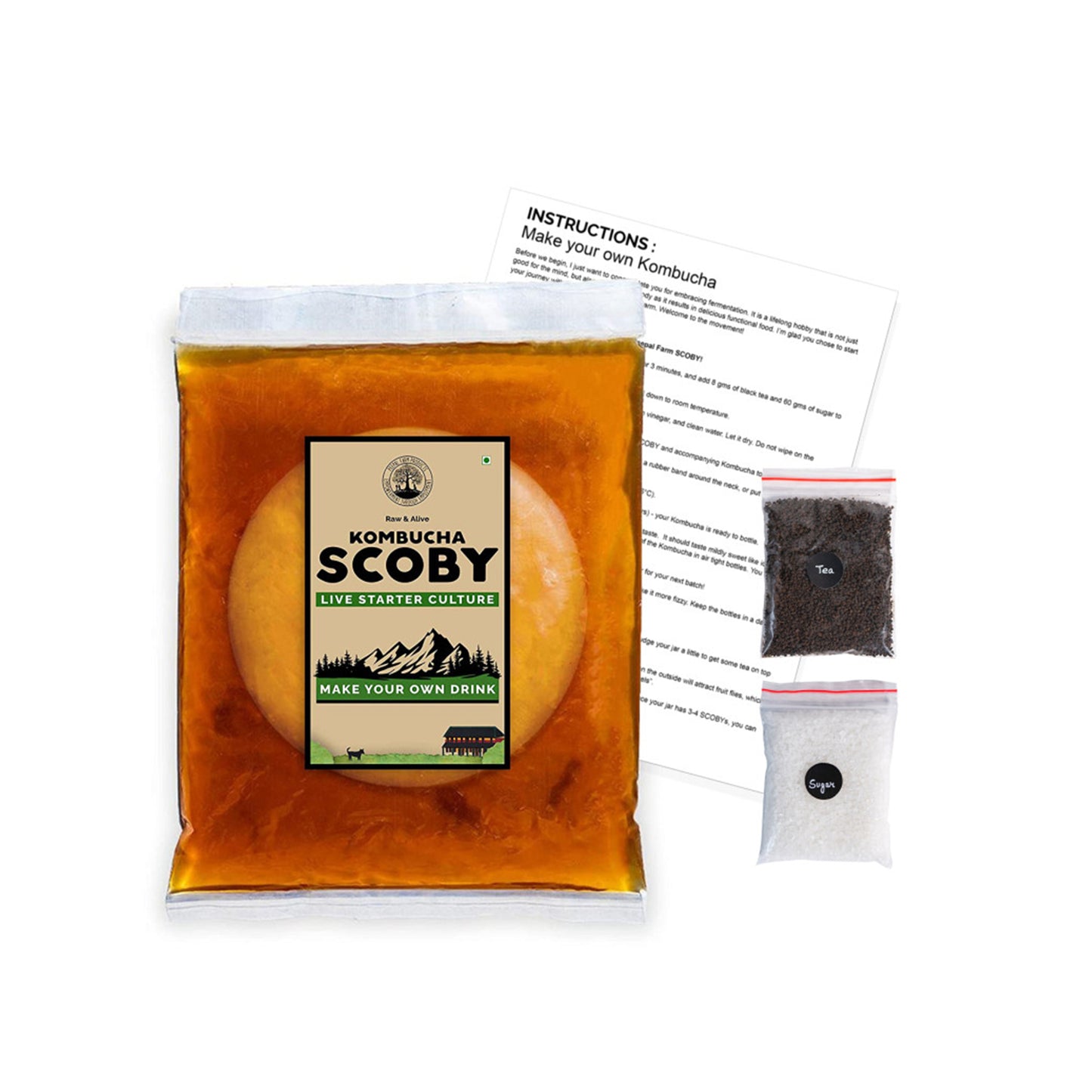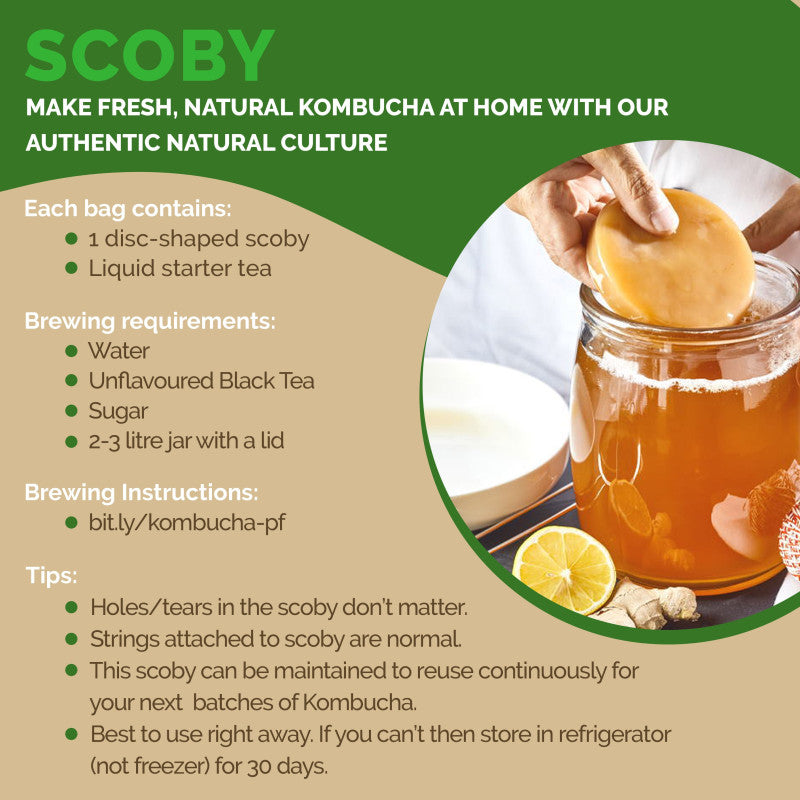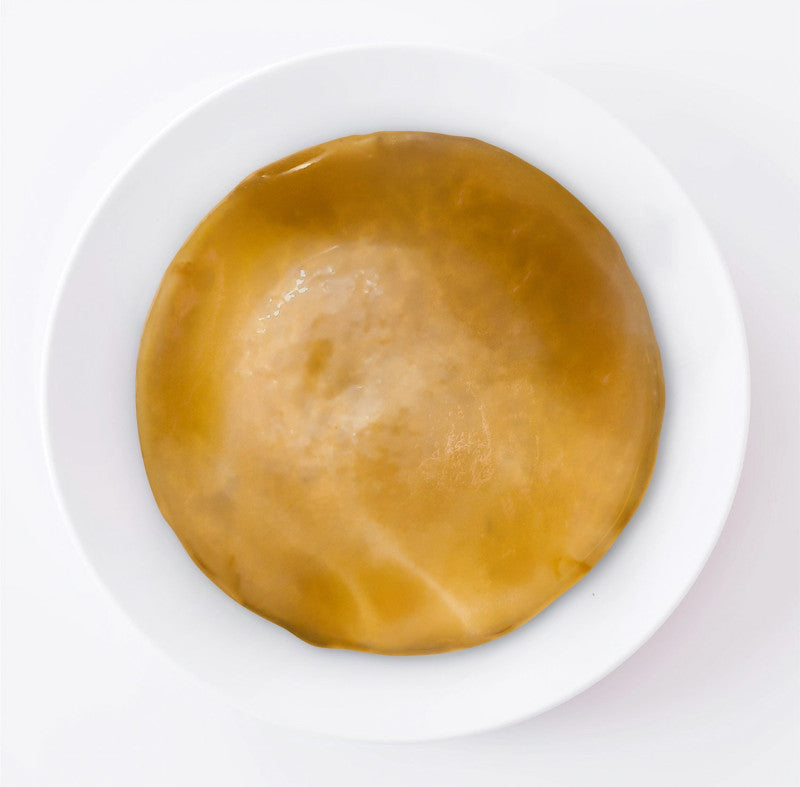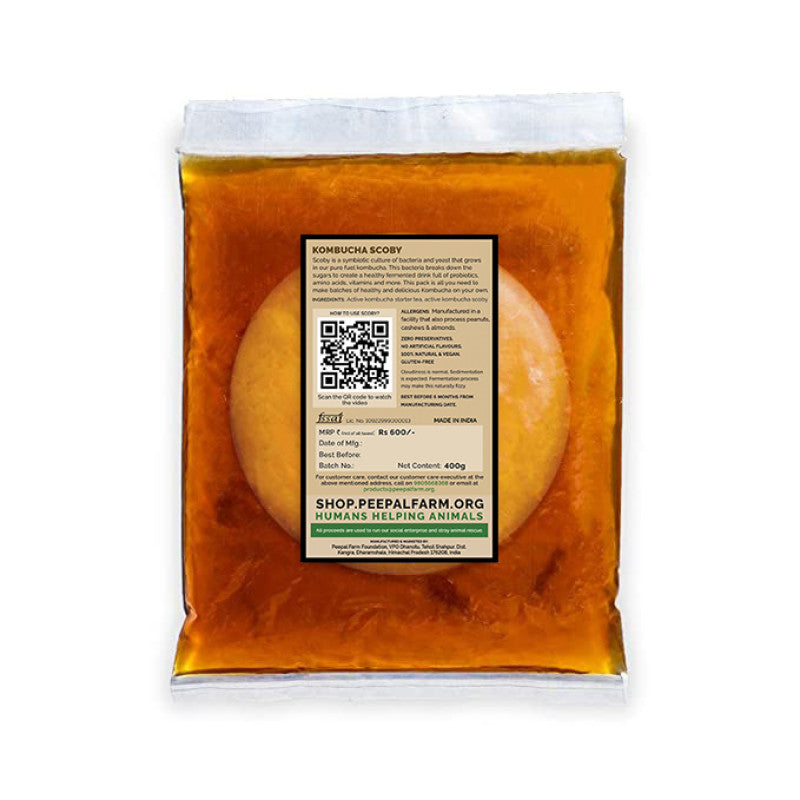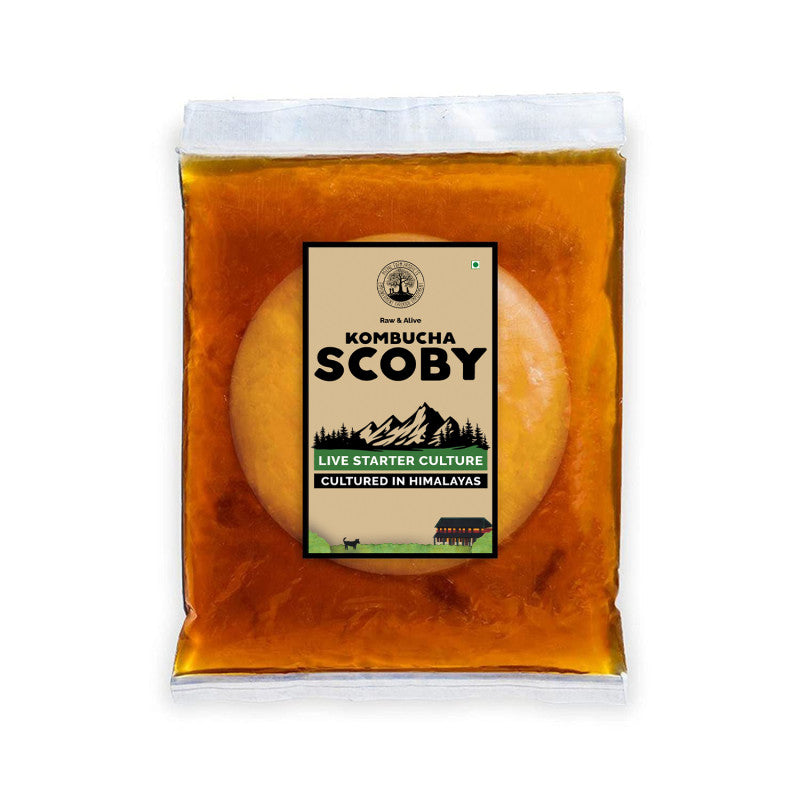Kombucha SCOBY and Starter Tea
Kombucha SCOBY and Starter Tea
Couldn't load pickup availability
Symbiotic Culture Of Bacteria and Yeast or Scoby is a jelly-like mass of cellulose that aids the fermentation process. This dish like fibre, breaks down all the sugar and creates the most gut friendly “kombucha”.
With no preservatives or excess sugar, we offer a live culture with some starter tea so that you can prepare your own batch of soury goodness.
Our starter tea is brewed with healthy amounts of cane sugar, black tea and purified water from the Himalayas.
Net Quantity: 500ml
Ingredients: Scoby, Purified water, Black tea, Cane sugar.
Comes with brewing instructions, frequently asked questions, tips and pre-measured quantity of tea and sugar you need to make your first batch of 1 liter Kombucha.
How to make Kombucha with your new Peepal Farm SCOBY!
- Bring 1 liter of water to a boil. Let it boil for 3 minutes, and add 8 gms of black tea and 60 gms of sugar to it.
- Turn the stove off, stir it and let the tea cool down to room temperature.
- Clean a glass jar with soap. Rinse it well with vinegar, and clean water. Let it dry. Do not wipe on the inside.
- Sieve the tea into the clean jar, and add the SCOBY and accompanying Kombucha to it.
- You can cover the jar with a clean cloth, and put a rubber band around the neck, or put the lid but not close it all the way.
- Keep the jar in a dark, warm place (ideally 25°C-35°C).
- In 10-14 days - (10 in summers, 14 or more in winters) - your Kombucha is ready to bottle.
- Pour out a little Kombucha from the jar into a glass to taste. It should taste mildly sweet like ice tea, and tart like vinegar. If you like the taste, pour out the rest of the Kombucha in air tight bottles. You can use glass bottles, or PET bottles.
- Make sure you leave at least 20% of Kombucha in the jar for your next batch!
- While bottling your Kombucha, add some sugar to it to make it more fizzy. Keep the bottles in a dark warm place for two weeks. Refrigerate and enjoy!
Tips
- Although your Kombucha must stay undisturbed, just gently nudge your jar a little to get some tea on top of the scoby to prevent mold.
- Make sure you wipe your jar clean from the outside, as any tea on the outside will attract fruit flies, which can cause your Kombucha to have small worms called “vinegar eels”.
- With each batch or two, you’ll notice your SCOBY will replicate. Once your jar has 3-4 SCOBYs, you can take out the new SCOBY to start another jar, or give it to a friend!
- Eventually your old SCOBY will die. A dead SCOBY turns really dark - no pun intended, and although not necessary, it’s best to remove it.
- There’s a lot of things you can do with extra SCOBYs (dead, or alive). You can blend them with fruits to make fruit leather, or simply dry them to make a leather like substance.
FAQs
Is a scoby alive?
Scoby is actually a cellular mat that houses live bacteria and active yeast which results in the fermentation of Kombucha.
How many times can you use a scoby?
With proper care, a kombucha culture can be re-used multiple times but if at some point your scoby shows signs of mould or lack of fizz in your kombucha, it’s time to compost it!
What kills a scoby?
The ideal temperature for a scoby to thrive in a kombucha lies between 16 to 29°C(60-85°F). A temperature greater than that can eventually kill a scoby.
Is eating scoby good for you?
While scoby is a slimy looking kombucha starter, it is perfectly edible. Apart from being a good source of fibre, it improves digestion and helps in normalising your cholesterol levels.
What kind of jar should I use?
I recommend you use a wide mouthed 3 liter glass jar. Bigger the SCOBY’s surface area, the shorter the fermentation time.
Can I use jaggery?
I will not recommend it. Jaggery can give off flavors to your Kombucha.
Can I use a different type of sugar/tea?
You can experiment with different sugars/teas, but to get your culture used to the new type of sugar/tea, gradually replace old sugar/tea (20%) with the new one you are introducing.
My SCOBY has a tear/hole. Is that a problem?
Although it might seem unsightly, it is not a problem for brewing Kombucha. Your SCOBY will gradually repair itself.
My SCOBY sank!
It’s not a problem. A new scoby will soon start forming on the surface of the tea.
My SCOBY has white patches; is it mold?
SCOBY will rarely get moldy. When a new SCOBY is forming, it has a lot of white patches which look like mold. If you have a black velvety spot, that’s mold … and you need to throw the batch and start over with a new SCOBY.
OMG! My SCOBY has worms!!
Not worms technically, these wiggly little creatures are nematodes called vinegar eels. That usually happens when your jar is not clean on the outside, and it attracts fruit flies and these naughty flies bring these vinegar eels to your Kombucha. Although they are harmless, I’ll recommend throwing the batch and starting over with a new SCOBY.
How does Kombucha taste?
Kombucha tastes somewhere between ice tea and apple cider vinegar. It is sour with a hint of sweetness. The more fermented the Kombucha is, the sour it will be - which is good, as that means more of organic acids, which is what you are consuming Kombucha for.
Best before 6 months from the date of manufacture.
Share
